Garden Visitor: Cinnabar Moth (Tyria jacobaeae) - Natural Weed Control!
When I went to do my "morning rounds" in our garden, something unusually bright suddenly fluttered across my path:
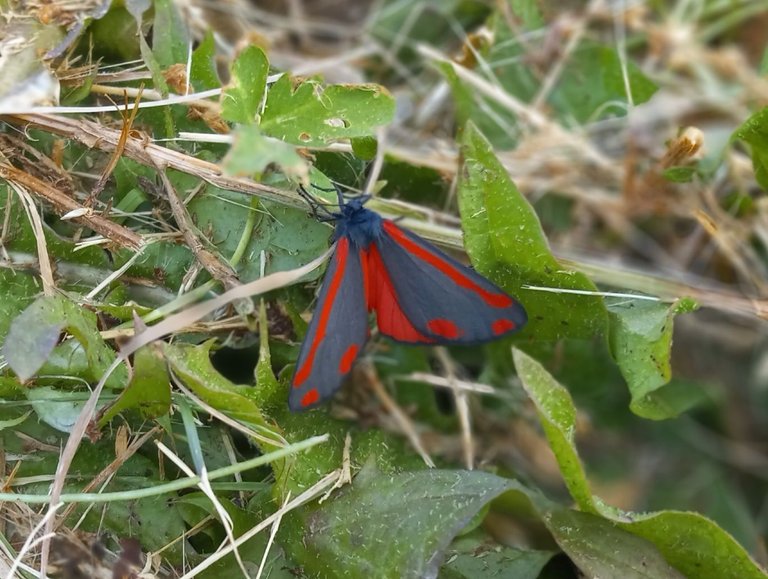
It was just so eye-catchingly vibrant red in a way I don't often remember seeing in nature, except for maybe a few berries and autumn leaves.
It took a while before this wee visitor finally slowed down for long enough for me to get a closer look.
After moving around for a good while, it finally settled on a sprig of parsley, allowing for a few slightly more focused pictures.
This is a Cinnabar Moth (Tyria jacobaeae), and it's one of the few day-flying moths we have around here, but I'm sure it gets confused with butterflies on a regular basis.
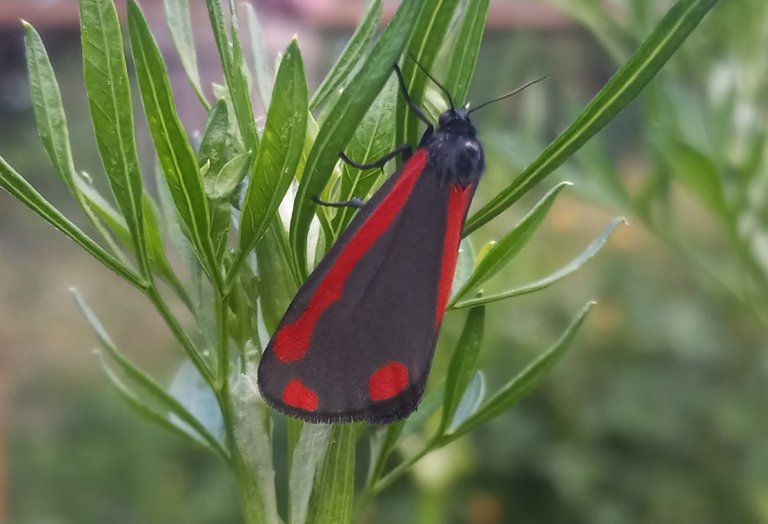
With a little reading, I learned that it can actually be a somewhat beneficial insect, in that they often lay their eggs on tansy ragwort — which is a highly invasive nuisance plant in our area. After the eggs hatch, the larvae can decimate the ragwort plants, preventing flowering and thus seeding.
Interestingly enough, I had this confirmed by our neighbor's yard service who mentioned the other day that she grew up on a farm, and they would just release the larvae on the ragwort to control it. Natural plant control!
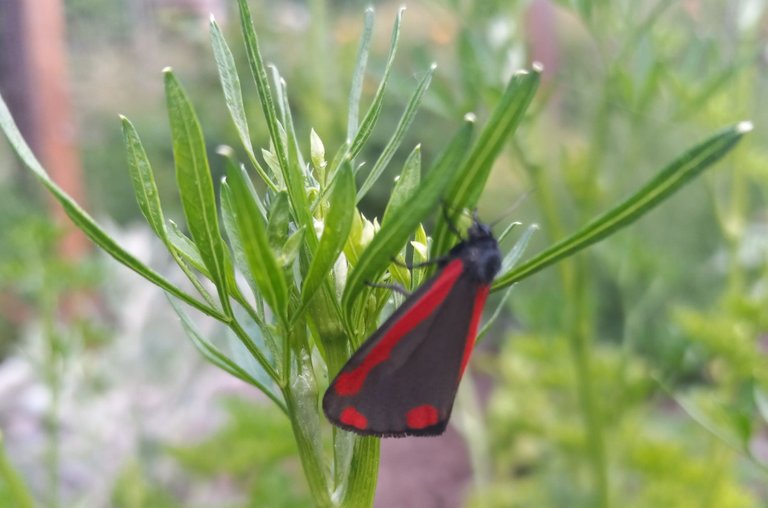
Further to that, the cinnabar moth is actually not native to North America! It was specifically introduced here from Europe to help control the spread of tansy ragwort.
It's an interesting cycle, in the sense that the ragwort is toxic to most animals, but the cinnabar moth larvae can metabolize it without problem. In turn, the larvae have few natural predators because they are toxic/distasteful to most birds and animals.
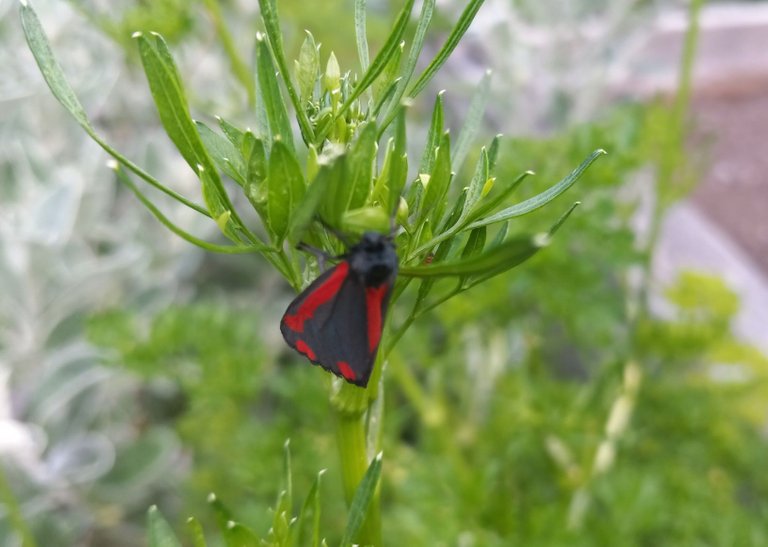
I thought it was a rather striking and beautiful garden visitor, and I actually spotted a second one flying by while admiring the first one.
Evidently is it flight season for them, at the moment.
Thanks for visiting! Comments are always welcome!
(all images are my own!)


Thank you for reading, please share your thoughts because I love comments and then take a minute to look at the community of #Silverbloggers and join us if you think you qualify. (If you think you qualify, you probably do!)
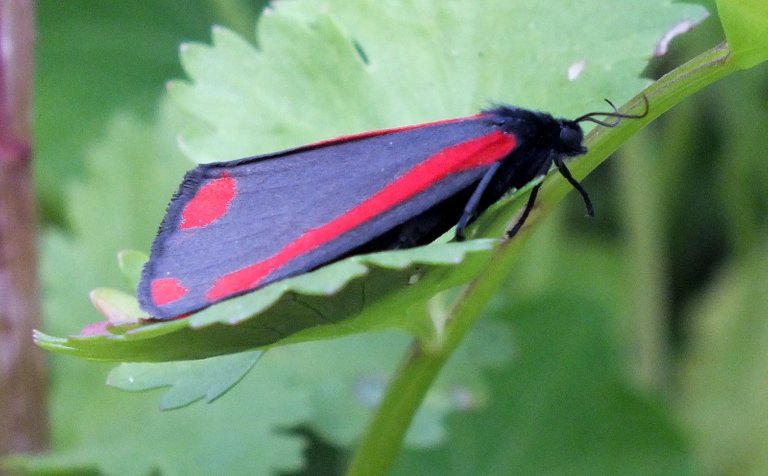
Live and learn something new every day, what lovely display this moth has to capture ones eye, doing a good duty around the garden as well.
@tipu curate
Upvoted 👌 (Mana: 59/69) Liquid rewards.
With the bright "warning" colors, I first thought it might be an unwanted and destructive pest in our garden, but it was lovely to discover how beneficial it was!
Flaming red on insects here normally flashing sign to stay away, nice to learn this is keeping good balance in the garden.
What a beautiful moth 😍 I have never had the opportunity to see one with vibrant colors. Those colors make her look really gorgeous. Lucky you could find it on your way 💚
We appreciate your work and your post has been manually curated on behalf of Insects Of The World Community. It will be added to the weekly curation report. Keep up the good work.
Incredible find, I like its colors.
We appreciate your work and your post was manually curated by @none! from the DNA team!
Reach us on Discord to learn more about the project!
Congratulations @cosmictriage! You have completed the following achievement on the Hive blockchain And have been rewarded with New badge(s)
Your next target is to reach 16000 upvotes.
You can view your badges on your board and compare yourself to others in the Ranking
If you no longer want to receive notifications, reply to this comment with the word
STOPCheck out our last posts: